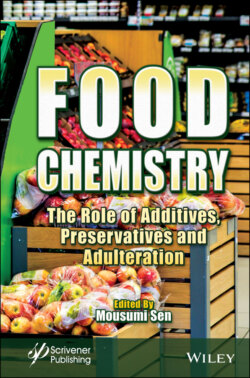Читать книгу Food Chemistry - Группа авторов - Страница 13
1.1 Introduction
ОглавлениеFood colors are basically the supplements that are called as pigments or dyes. When these supplements are added to the food, these improve color of the eatables. These type of color supplements are basically increased within the food just to overcome the color loss that is caused due to the prolong storage conditions. These additives also provide color to the colorless food that makes them more attractive [9]. Food colorants are being added to food in one or another form since many years. Food color plays an eminent role in today’s scenario.
Colorant are different from one another on the basis of their chemical properties and physical properties such as structure, sources, and usage purpose. Colorants are usually added to processed food such as candies, snacks, margarine, cheese, soft drinks, jam/jelly, gelatin, pudding, and pastry fillings [10, 14]. It is known that in medieval ages nitrate was used to enhance the color of meat and to prevent botulism apart from salt and smoke that were used as preservatives.
Food colorants were used by Egyptians in 400 BC to regulate the color of wine and confectionery products. Around the mid-1800 some of the natural colorants added to food were vegetable-derived products such as saffron, carrot, mulberry and flower, various animal originated pigments, and minerals from copper and iron. Around the end of 19th century, the first synthetic dye obtained from organic coal tar was used in butter and cheese [11, 13]. It has been reported that food colorants were used in Europe during the Bronze age.
